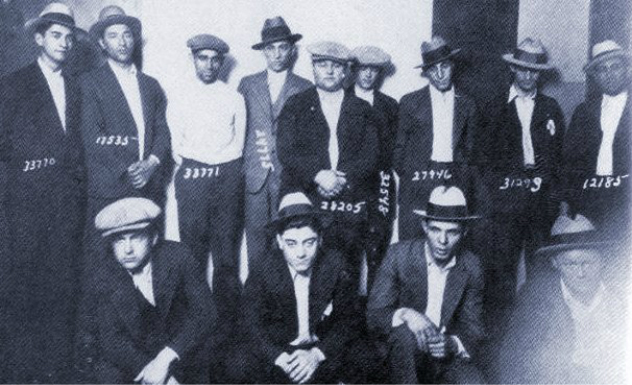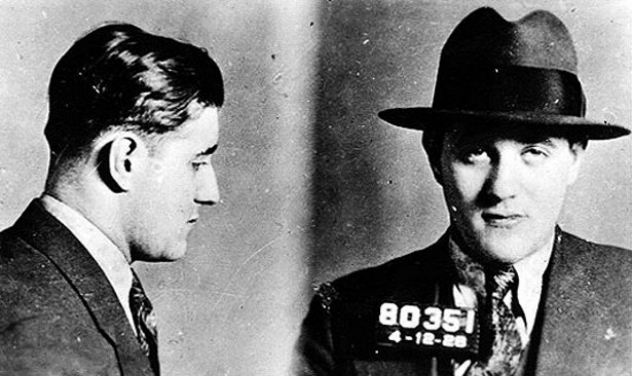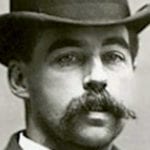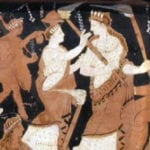 Technology
Technology  Technology
Technology  Our World
Our World 10 Ways Icelandic Culture Makes Other Countries Look Boring
 Misconceptions
Misconceptions 10 Common Misconceptions About the Victorian Era
 Mysteries
Mysteries 10 Strange Unexplained Mysteries of 2025
 Miscellaneous
Miscellaneous 10 of History’s Most Bell-Ringing Finishing Moves
 History
History 10 Great Escapes That Ended Right Back in Captivity
 Weird Stuff
Weird Stuff 10 Fascinating Things You Might Not Know About Spiders
 Food
Food 10 Everyday Foods You Didn’t Know Were Invented by the U.S. Military
 History
History 10 Odd Things Colonial Americans Kept at Home
 Weird Stuff
Weird Stuff 10 Superstitious Beliefs That Once Consumed Entire Cultures
 Technology
Technology 10 Scientific Breakthroughs of 2025 That’ll Change Everything
 Our World
Our World 10 Ways Icelandic Culture Makes Other Countries Look Boring
 Misconceptions
Misconceptions 10 Common Misconceptions About the Victorian Era
Who's Behind Listverse?

Jamie Frater
Head Editor
Jamie founded Listverse due to an insatiable desire to share fascinating, obscure, and bizarre facts. He has been a guest speaker on numerous national radio and television stations and is a five time published author.
More About Us Mysteries
Mysteries 10 Strange Unexplained Mysteries of 2025
 Miscellaneous
Miscellaneous 10 of History’s Most Bell-Ringing Finishing Moves
 History
History 10 Great Escapes That Ended Right Back in Captivity
 Weird Stuff
Weird Stuff 10 Fascinating Things You Might Not Know About Spiders
 Food
Food 10 Everyday Foods You Didn’t Know Were Invented by the U.S. Military
 History
History 10 Odd Things Colonial Americans Kept at Home
 Weird Stuff
Weird Stuff 10 Superstitious Beliefs That Once Consumed Entire Cultures
10 Unsolved Mysteries From Early 20th-Century Organized Crime
From the turn of the century through Prohibition and into the 1950s was a time of elegantly dressed men, even more elegant women, and a blatant disregard for the law in the United States. Organized crime reached a new high. Even today, there are plenty of mysteries about what went on behind the scenes and in the shadows—we only saw the bodies, the fallout, and the executions.
10 The Barrel Murder
1903

On April 14, 1903, a grisly discovery was made on a New York City street corner. Sealed in a wooden shipping barrel was the nearly decapitated corpse of a man. He had been killed ultimately by a knife cut to the jugular, but not before 18 other stab wounds had been administered to his neck.
Police and Secret Service remembered seeing him in the company of members of the Morello gang. The day after the body was discovered, eight members of the gang were picked up and arrested. The writing on the barrel gave some more clues about what had happened to the unfortunate man—it was identical to other barrels found at a local bakery. The man who had placed the order for the sugar once shipped in the barrel was among those arrested. Part of the problem, though, was the unidentified status of the victim. It wasn’t until police received an anonymous letter than indicated the murder victim was a counterfeiter from Buffalo that he was identified as Benedetto Madonia.
By now, the police were out of time. They couldn’t hold their prisoners any longer without charging them, and they didn’t really have any concrete evidence. The suspects were released, but soon re-arrested on other charges like counterfeiting and perjury. This gave police time to connect Madonia to the Morello gang and officially charge Tommaso Petto with murder—a charge that was largely based on Petto’s pawning of a watch confirmed to have been owned by Madonia.
From there, the case got confusing. The district attorney claimed that the man on trial wasn’t actually Petto, but someone named Peccararo; Peccararo had been carrying Petto’s pistol permit, so he had gone along with the mistaken identity. And even though police were able to trace Madonia’s whereabouts leading up to his murder, they still weren’t able to come up with any more concrete evidence of what had happened to him.
Eventually, Morello gang members that had been arrested in connection with the murder were released, and the man who may or may not have been Tommaso Petto was also released because of a lack of evidence. Police had been basing their case on the potential of one of the other gang members ratting on their associates, but that never happened. Petto was later killed outside his Pennsylvania home in 1905, and no one was ever brought to justice in the grisly Barrel Murder.
9 Casper Holstein’s Kidnapping
1928

Casper Holstein was one of the larger-than-life figures of Prohibition era Harlem. After coming to New York City from the Danish West Indies in 1894, he took a job as a porter in Manhattan and eventually worked his way over to Wall Street. It was there that he learned all he could about the stock market. From there, he turned to the numbers game and running illegal lotteries.
By the 1920s, Holstein was at the head of one of the largest numbers rackets of the era; he was said to have been making somewhere in the neighborhood of $12,000 daily. Far from a sinister figure, though, much of his money went back into the community. He funded Harlem artists, gave money to colleges, museums, disaster relief funds, and childrens’ charities.
Someone like that doesn’t go without making enemies, though, and the bizarre event that started his downfall is shrouded in mystery. Holstein was kidnapped in 1928 by a group of five men that have never been identified. There was a $50,000 ransom demand, but the ransom was never paid, and Holstein was released only three days after his abduction. It was an odd end to a kidnapping case that had gained national attention. Holstein was either unable to identify his kidnappers or, more likely, chose not to. Not long after his kidnapping, Holstein was arrested and jailed for a year for his involvement in gambling rackets. After that, he never went back to the numbers game that had been one of the largest empires in the city.
An up-and-coming gangster named Dutch Schultz did, however, step into Holstein’s shoes. Schultz’s emergence in the numbers game led to rumors that the kidnapping had been orchestrated by Schultz in an attempt to move in on Holstein’s territory, but no one ever knew for sure. Holstein died in 1944 without ever revealing what really happened in the three days he was missing.
8 Rocco Perri
1924

Organized crime wasn’t only rearing its head in the United States during Prohibition, and there were others north of the border who were eager to get in on the money by running illegal liquor to and from Canada. Throughout the 1930s, Rocco Perri was at the head of a massive organization that dealt in drug trafficking and bootlegging. He made his success common knowledge, boasting to the media in 1924 and describing himself as the king of the bootleggers. Not surprisingly, it made him countless enemies, and eventually, they got rid of him.
It’s thought.
There were several attempts on his life, including one that killed his girlfriend and partner in crime Bessie Starkman. There were other attempts after that as well. Bombs were planted and detonated in his home and car, but each time, he managed to catch a lucky break and find himself elsewhere when they went off. His luck finally appeared to run out in 1944, though, when he left his house for a walk and was never seen again.
There are plenty of theories about what happened to him. Some say that he decided to cut his losses and walk away from it all before he did get killed, while some newspapers were reporting that he had been grabbed off the street and beaten to death. He was also thought to have been the target of a rival syndicate from Buffalo. Because no remains were ever found and no death certificate ever issued, verifying death is a tricky thing. This could have gone down as just another disappearance of another mobster, if not for the will that was discovered in 1998. Written just after the death of his girlfriend, the will is only recently being pursued by undisclosed family members.
7 Terrible Tommy O’Connor
1921

In February 1921, police were dispatched to a Chicago apartment to serve an arrest warrant for Tommy O’Connor. The 20-year-old Irish immigrant was ready for them. When officers entered his apartment and gunshots were exchanged, it ended in the death of Sgt. Patrick O’Neill.
O’Connor was charged and convicted of the officer’s death, then sentenced to hang. Four days before he was due to make his final walk to the gallows, he somehow managed to get his hands on a gun, escape the prison yard, and make his getaway by hitching a ride on a random vehicle that happened to be driving by.
No one saw or heard from him since. It’s long been thought that he left the area—or left the country altogether. He did manage to drop off the face of the Earth. According to some stories, he was said to have retreated to life as a monk, returned to Ireland, or headed off to Mexico.
And for the next five decades, the gallows kept waiting for him. Standing in the basement of the city’s Criminal Courts Building were the gallows, ready and waiting should O’Connor ever surface again. Over the years, the gallows were used at least (and perhaps more than) 40 times for various executions, but O’Connor stubbornly refused them their prize. Officially replaced in 1927, they still remained in their place for decades, just in case O’Connor was found. It was only in 1977 that the gallows, weakened by termites, were ordered to be taken down and moved to a local museum.
6 Al Capone & Edward O’Hare
1939

Chicago O’Hare International Airport is named for a World War II hero who may never have risen to fame without help from his father—help that ended with the elder O’Hare running afoul of Al Capone and the mob.
A native of St. Louis, O’Hare was an entrepreneur looking to expand his business interests outside of his home city. His interest landed on Chicago and greyhound racing. He eventually bought the rights to a game-changing patent—the mechanical rabbit. At that time, doing any kind of business in Chicago—especially business in gambling—meant going through Al Capone. It wasn’t long before O’Hare and his mob partners were operating racetracks across the country and making tons of money. All good things must come to pass, though, and it was about this time that federal agents were looking for any way they could find to put an end to Capone’s business.
On November 8, 1939, O’Hare returned home from one of his tracks and was shot and killed by several men in a car that had been driving alongside him. The men were never identified, and the murder has never been solved.
There are some pretty incredible suspicions about what happened, though.
He had high hopes for his son, the future hero of World War II. But in order to get into the elite echelons of the United States Naval Academy, he needed to be nominated by someone pretty high up, and it’s thought that the elder O’Hare secured his son’s nomination to the Academy by ratting on Al Capone. According to O’Hare’s granddaughter, her grandfather started carrying a gun not long before he was killed, and he had stopped spending time with his family. In retrospect, she’s sure that he feared for their lives.
5 Judge Joseph Force Crater
1930

Judge Crater was a State Supreme Court Justice in New York City at the time of Tammany Hall and the Mafia. On August 6, 1930, Crater left his house, got into a cab, and was never seen again.
At least, not officially.
Sightings of the judge continued for decades and ranged from the impossible to the fantastic. According to some, he had disappeared of his own accord, traveling to Africa and running small-time bingo games. Other people saw him herding sheep out west.
While that definitely seems unlikely, the actual facts of his disappearance are few and far between. The morning that he disappeared, he had cashed two large personal checks from two different bank locations. Aside from that abnormality, everything seemed pretty normal; he went to dinner, and he was supposedly going to spend the evening at the theatre. He never made it, though, and those who are sure he was killed have almost as many theories as there are sightings. One of the favorites is that he had been targeted by the mob because of his knowledge of the considerable connection between New York City’s political elite and the organized crime scene—and that he had intentions of blowing the whistle on the whole lot of them.
In 2005, papers found in the possessions of a 91-year-old New York woman shed new light on the case. According to the documents, the woman’s husband had overheard a conversation between two men as they talked about killing the judge and burying him on Coney Island. It was suggested that the killing was somehow related to the death of Abe Reles, a member of Murder, Inc. who was in the process of testifying against his cohorts, and that one of the police officers involved with the case was also involved in the judge’s death. No concrete proof has been found to support the theory, though, and no body was recovered from beneath the Coney Island boardwalk.
4 Abe Axler & Eddie Fletcher
1933

While Al Capone and his gang were running Chicago, The Purple Gang was running Detroit and southern Michigan. Their reign was short—less than 10 years—but at their height, their members were the most wanted and most dangerous according to the area’s law enforcement.
November 27, 1933 was the beginning of the end for the almost entirely Jewish gang. The Detroit Police Department’s Public Enemies Number One and Two, Abe Axler and Eddie Fletcher, were found in the back of their car in Bloomfield Hills. The men, known as “The Siamese Twins,” were the gang’s hit men and enforcers, but their hard-drinking and hard-living lifestyle had taken them down a bit from the high standing they’d previously enjoyed. When their bullet-ridden bodies were found in the back of the car, side by side with their hands entwined, the first suspects in the killing were the two hit men poised to take over their position within the organization.
Harry Fleisher and Harry Millman weren’t the only suspects, though, and it was also put forward that the two hit men had been killed in retaliation for their seizures of some local distilleries. Their bodies were found not long after they had been killed, shot at close range. One of the official media statements issued about the killings suggested that they had a lot of enemies, and one of those enemies had finally caught up with them. No one was ever arrested for the murders and no charges were ever brought in the killings that meant the beginning of the end of Detroit’s Jewish crime syndicate.
3 Bugsy Siegel
1947

Bugsy Siegel was instrumental in building Las Vegas—that’s undeniable. While countless mobsters and organized crime members fade into obscurity, there’s something that continues to capture the nation’s collective imagination about the unsolved murder of the 41-year-old, Hollywood-handsome gangster. As he sat reading the paper in a Beverly Hills home, Siegel was shot with a .30-caliber M1. The gunman has remained a mystery since that fateful night of June 20, 1947.
More than 60 years later, people are still coming forward with their version of what happened that night. According to memoirs and memorabilia left behind by the wife of Siegel’s business partner, Moe Sedway, the motive for the murder wasn’t money, and it wasn’t the seemingly endless hemorrhaging of cash that plagued a young Las Vegas and the Flamingo Hotel and Casino. Siegel was killed, she says, because he had gotten sick of Sedway looking over his shoulder—and he’d threatened to kill his partner. She knew, she said, because it was her lover that had done it.
There’s also the doubted confession of associate Eddie Cannizzaro, who claimed to have been the one who pulled the trigger.
And then there’s the professed family secret of the Hulls that a World War II veteran had returned stateside and was hired to take out Siegel. The name of the person who hired him is one that comes up a lot in connection with the unsolved murder—Jack Dragna. Dragna personally knew the veteran, Robert MacDonald, who was an expert marksman and counted the weapon that killed Siegel among his specialties.
And then there’s the possibility that it was angry investors who took out the hit on Siegel; there were a number of legitimate investors that had put money into the Flamingo only to watch it disappear, and perhaps the only way they thought they would be able to sell their interests and recoup their losses was to kill the man that was spending their money. There are plenty of theories about what happened on that night, but it’s doubtful any one of them will ever be proven.
2 Jack “Machine Gun” McGurn
1936

It can’t be denied that Jack McGurn was one of Al Capone’s right-hand men—and that was for a reason. According to one story about his ruthlessness, McGurn, who was partial owner of a nightclub, didn’t take lightly to the actions of a certain comic named Joe E. Lewis. Lewis was incredibly popular when he left McGurn’s club for a better contract, and Capone was so horrified by the punishment that McGurn and his thugs dished out that he gave the man $10,000 to help him while he recovered—and learned to talk again.
McGurn was eventually said to have been given the job of taking out Capone’s biggest rival, Bugs Moran. His involvement in the notorious St. Valentine’s Day Massacre—which failed to kill Moran—has long been up for debate. According to one popular theory, he was behind the whole thing and got his girlfriend at the time to cover for him, later marrying her so she couldn’t be forced to testify against him in court. While just who was behind the massacre is still up for debate—and probably always will be—McGurn’s unsolved murder just adds on to the mystery.
McGurn was bowling when a handful of gunmen stormed the alley and killed him. It was February 13, 1936, the eve of the seven-year anniversary of the massacre that so many people thought that he had been responsible for organizing. McGurn’s body was staged after the killing. He was found holding a nickel and a poem that read, “You’ve lost your job, / You’ve lost your dough, / Your jewels and handsome houses, / But things could be worse, you know, / You haven’t lost your trousers.” There were never any arrests made in connection with the murder.
1 Arnold Rothstein
1928

Arnold Rothstein was the mob’s Mr. Big. Born in Manhattan in 1882, his parents would later admit that they always knew there was something not quite right about him—a suspicion that probably started around the time when they found a three-year-old Arnold standing over his sleeping brother with a knife.
Rothstein, after an extreme falling-out with his family, eventually worked as a cigar salesman until he had raised enough capital to get into the gambling business. He quickly rose through the ranks with the help of a handful of gaming rackets. Like many others of his era, he leapt at the chance to get into bootlegging with the start of Prohibition. With Prohibition came drugs and drug trafficking, and that business doesn’t come without enemies, especially when there are as many myths as there are facts about Rothstein.
According to one story, it was Rothstein, already up to his elbows in the world of gambling, who was responsible for the outcome of the notorious World Series that would leave the Chicago White Sox in disgrace. Just how much he had to do with fixing the game is under dispute. Some say he was directly responsible, while others (including Rothstein himself, who testified in court) say that he had nothing to do with it. The truth is most likely somewhere in the middle; Rothstein likely had some information but didn’t actively do anything.
Rothstein would go on to teach the craft to other notorious names like Lucky Luciano and Meyer Lansky, but it wasn’t long before his run came to an end. On November 6, 1928, a 46-year-old Rothstein was dead, and his murder was never solved.
In debt to George McManus, Rothstein was summoned to meet with McManus at the Park Central Hotel. What happened when Rothstein entered the hotel room is a matter of speculation, but when he left, he had been shot in the stomach and the gun had already been discarded out the window. He lingered for a few more days before finally dying, and it turned out that his murder wasn’t as clear-cut as you’d expect. All the usual suspects, including McManus (whose coat was found in the room), either couldn’t be definitively placed in the area at the time of the murder or had airtight alibis. Police were left to wonder if the incident had been over gambling debts, if it had been the result of an unplanned argument, or if it had something to do with the sum of money Rothstein stood to win on an election-day bet.
Either way, they didn’t wonder for long. Luciano was already poised to step into his empire.








